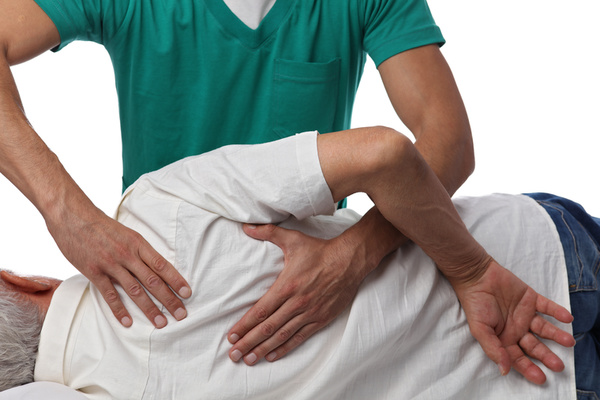
If you are suffering from pain and you’d like to know more about chiropractic, this blog is for you! The Alternative Pain Treatment Directory reached out to Dr. Tim Talmadge, the owner of Delmar Chiropractic in Delmar, New York, and asked him to share why he became a chiropractor, how he treats pain and the successes he has had helping patients.
Can you tell us what led you to the field of chiropractic?
I was in my early twenties and was working for an investment firm. I was very physically active and was playing rugby. During a rugby practice, I herniated a disc in my lower back. I tried all of the conventional things including physical therapy. After more than a year, I just wasn’t getting all the way better. My life was on hold, so I finally went to a surgeon to see if he could fix me. With surgery, he said there was an 80 percent chance I would get better, a 10 percent chance that I would get worse, and a 10 percent chance that I would stay the same. I decided to have the surgery and scheduled a few weeks off from work. I was on the pre-op table with my gown on and the IV line in my arm when I started to get nervous. There was this voice in the back of my head that was questioning the surgery.
I asked the nurses if they thought I should get another MRI because my back wasn’t as bad as it had been when I got the original MRI. They told me to talk to my doctor who was a well-known neurosurgeon. When he came in to see me, I said the same thing to him that I did to the nurses. What happened next is something I will never forget until the day I die. He looked at me and said, “Well, you know what, I don’t need the money that bad.” Of course, he was joking. But if he had said, “Don’t worry about it, you’ll be fine,” I would have gone ahead with the surgery. Instead, I decided not to have the surgery and scheduled a second MRI.
When I went back to see him after having the second MRI, he said the surgery probably wasn’t going to help me. The original MRI indicated that I needed surgery, but the disc had gotten somewhat better since that time.
Soon after, I went to the same place I now work—Delmar Chiropractic. I got an adjustment and started to feel better immediately. I had tried chiropractic for the injury before that, but it had been a different type of chiropractic. It wasn’t the same kind of manual adjustments that Delmar Chiropractic did at the time. The kind of adjustments that we still do here today.
In the beginning, I was going a couple times a week for about four weeks. After four weeks, my doc said I was looking pretty good. He said I could either do maintenance or come back when I was hurting again. I chose to do the maintenance. I was able to get back to playing rugby and continued to come once a week during the rugby season. I then went to once a month. Thanks to chiropractic, I basically got my life back.
At the time, I wasn’t satisfied with my career and was looking for something different. After deciding to pursue chiropractic, my wife and I moved to California in order for me to attend chiropractic school. I was 30 years old at the time, and I was able to complete the accelerated program in three years. When I graduated, I was valedictorian of my class and won the clinical excellence award.
After graduating, I returned to Delmar and joined the staff of Delmar Chiropractic as an associate doctor. I purchased the practice in 2014, and I now have two other doctors working with me. I really have gone full circle—from patient to associate doctor to principal doctor.
Can you tell us about your approach to treating pain?
When it comes to pain, what we often say is that if you are only treating the point of pain, you are probably wrong. One of the keys to treating pain is understanding or diagnosing what is causing the pain in the first place. Almost always, it’s not an anatomical issue. For example, your gallbladder or an ovarian cyst can cause back pain. For that reason, one of the most important things when someone comes into our office is to make sure that chiropractic is appropriate for them. If their pain is being caused by something that isn’t related to chiropractic, we want to make sure they get to the appropriate doctor as soon as possible.
Typically, it is a functional issue or systemic imbalance that causes dysfunction in the vertebral column as well as in the joints and ligaments of the column and the muscles that stabilize and move the columns. The nerves get irritated, and they cause pain. The nerves also sense pain and coordinate movement.
What we have found is that if you can identify the systemic imbalances and how that is impacting the structural function, we can work to correct that. That in turn will allow the body to heal. As chiropractors, we believe that the body has the power to heal itself. We just need to create the right environment so that the body’s natural healing ability can flourish.
Can you give us an example of one of your patients who has significantly improved their pain through the use of chiropractic?
I have lots of examples. That is why this is such a wonderful profession—because people do so well after receiving chiropractic care. It may sound strange, but as chiropractors, we get used to seeing people get better and being able to live their lives the way they want to. I’m a great example of that because chiropractic gave me my life back.
Just recently, I saw two patients who reminded me of how impactful you can be. The first patient is one I have been seeing for almost twenty years. I hadn’t seen her since before the pandemic, and when she came in, she told me that during that time she had experienced a disc injury. She had done physical therapy, received injections, and tried a variety of different treatments to no avail. The pain got so bad that she thought about committing suicide. When I asked her why she hadn’t come to see me, I realized that she had kind of gotten caught up in the medical model.
After I evaluated her, I got to work doing good old-fashioned chiropractic. Within a couple of weeks, she was considerably, considerably better. And that is after spending two years in a lot of pain and kind of getting the run around. I’m certainly not criticizing the doctors that were treating her. I’m just acknowledging that she was not getting the care she needed to address her issue.
The other patient that comes to mind is young woman who is twenty-five years old and pregnant. She became a patient of mine when she was in high school, and during a recent appointment, she said, “You know, you’re going to be stuck with me for the rest of my life. When I was in high school and hurt my back while running track, I was in pain for two years. Nobody could figure out how to help me, but you figured it out, and you fixed me. It’s because of you that I was able to run track again.” She is now seeing me for pregnancy-related aches and pains.
Is chiropractic beneficial during pregnancy?
Chiropractic is excellent during pregnancy. If you think about the mechanics during pregnancy, a woman’s center of gravity changes. Hormonal changes cause ligaments to be a bit more lax. Your gait changes. When a woman is pregnant, their hips, low and mid-backs often go out of alignment. That dysfunction can cause pain.
Chiropractic is a great way to manage the impact of the changes that happen when you are pregnant. I recommend that pregnant women receive monthly adjustments, and as they near the end of their pregnancy, weekly adjustments can be beneficial. My pregnant patients report that they feel better, walk better, sleep better, and breathe better. Some women believe that regular chiropractic care during pregnancy can result in shorter labors.
You mentioned that you are more of an old-school chiropractor. In your practice, do you perform manual adjustments only?
In addition to manual adjustments, we also use a Leander Flexion-Distraction Table which works great for disc and joint injuries. This is a professional grade table, not one of those decompression tables that you see advertised in the newspaper. The bottom half of the table flexes down and then comes back up which creates this nice decompression and a pumping action. That motion brings nutrition into the spine and joints and helps pump out the inflammatory chemicals that cause pain. It’s like bringing in the groceries and taking out the garbage. We do some manual adjustments while a patient is on the table as well. These tables are unique and not all practitioners use them. My mentor had one which has a lot to do with why I wanted to have one in my practice.
In addition to the table, we use the Impulse IQ which was invented by a chiropractor. It’s a wonderful device because you can use it to restore good function to the movement segments of the spine in a way that limits the amount of force. The device contains an accelerometer and delivers a physical impulse to a misaligned vertebra. The accelerometer measures the speed at which the vertebra bounces back. It matches that speed until it gets a nice, even feedback—meaning that the vertebra is now moving symmetrically. It’s a truly remarkable device that gets wonderful results. My elderly patients respond quite nicely to it because it can be more comfortable than a manual adjustment.
Do you address diet with your patients?
Nutrition plays an incredibly important role in the body’s ability to heal and sense pain. A pro-inflammatory diet is bad in many ways and it can make you hurt more. We recommend an anti-inflammatory diet with lots of vegetables, lean protein, and good fats. We suggest to our patients eat less of the cheap carbohydrates and processed and sugary food. The diets that we recommend for managing pain are very similar to diets that are recommended for people who are trying to manage their body composition.
Have your patients had success in reducing their pain through diet?
Just today, I saw a husband and wife who are in their seventies. They have been following an anti-inflammatory diet, and when I worked on them, there was a lot less tension in their system. Both had lost weight and said that they felt better.
Some chiropractors recommend a treatment plan that requires a patient to come three times a week for a period of six weeks. What are your thoughts on that?
Occasionally, there is a need to be seen multiple times a week. At Delmar Chiropractic, our goal is to empower our patients to become less dependent on chiropractic by encouraging them to participate in their care. That doesn't mean they don't need chiropractic though! Even when you brush and floss you still need the dentist. The same holds true for chiropractic! By improving posture, diet, exercise levels, strengthening and stretching, patients can play a big role in their recovery while supporting the work of the chiropractor. The patient and doctor are a team, each with an important role to play.
As a chiropractor, if you can help a patient meet their goals for pain relief, improved function, performance and health, it means you are doing right by the patient. When this occurs, all of the goals for your chiropractic practice will come right along too. If your patients do well, then your practice will grow and you will be able to help more people.
That philosophy has worked well for us, and I’m proud to say that Delmar Chiropractic has been voted number one for chiropractic care in the Capital Region of New York for four straight years.
Search All Alternative Pain Treatment Providers
Search Recommended Pain Treatment Products
Dr. Talmadge is Alternative Pain Treatment Directory CEO Cindy Perlin's chiropractor. Learn more about his practice at delmarchiropractic.com
Christine Graf is a freelance writer who lives in Ballston Lake, New York. She is a regular contributor to several publications and has written extensively about health, mental health, and entrepreneurship.
More about chiropractic:
Chiropractic Treatment of Chronic Pain











Comments